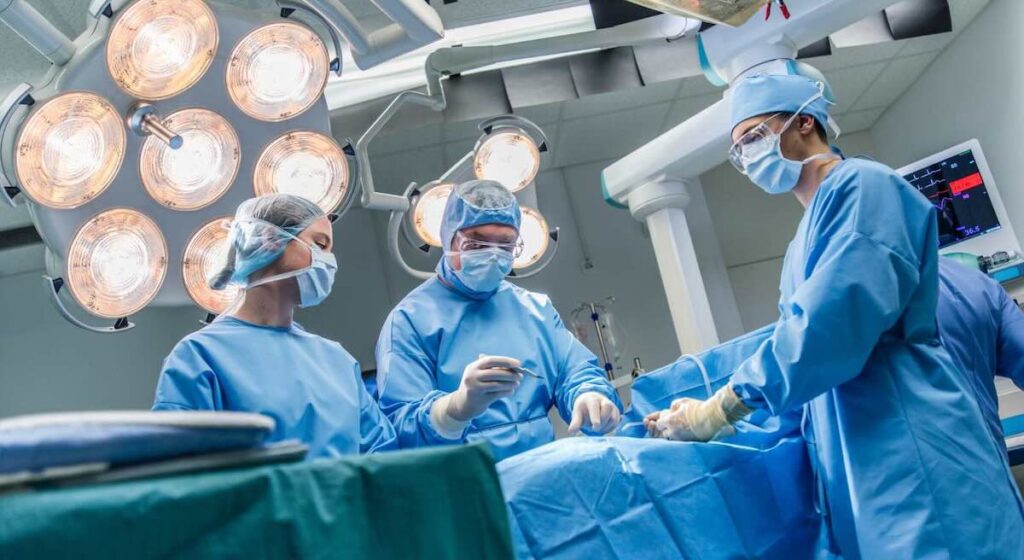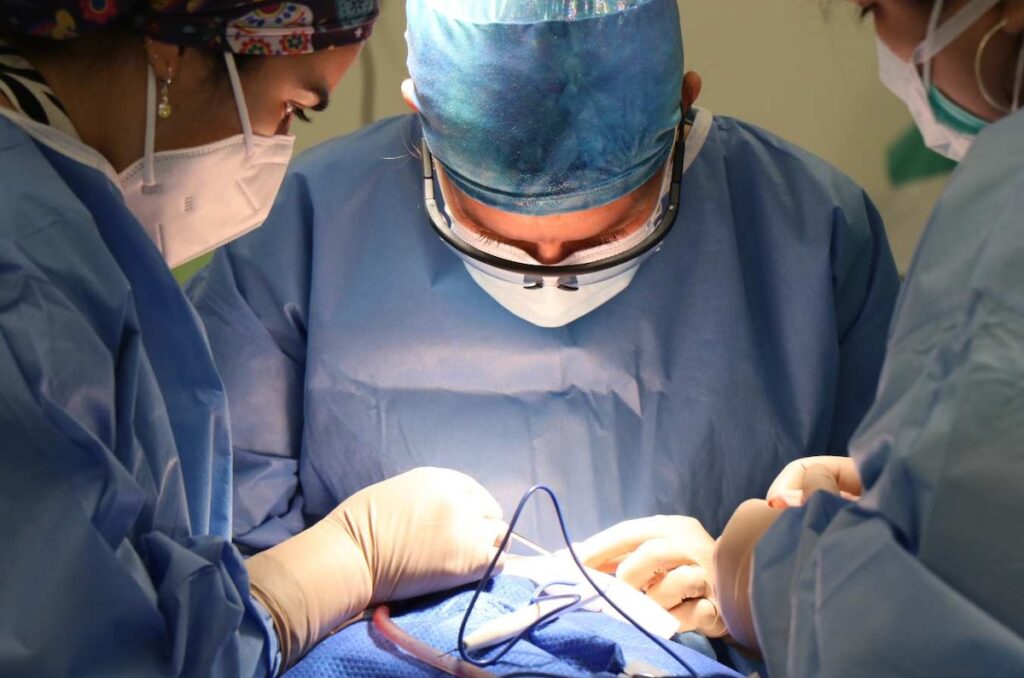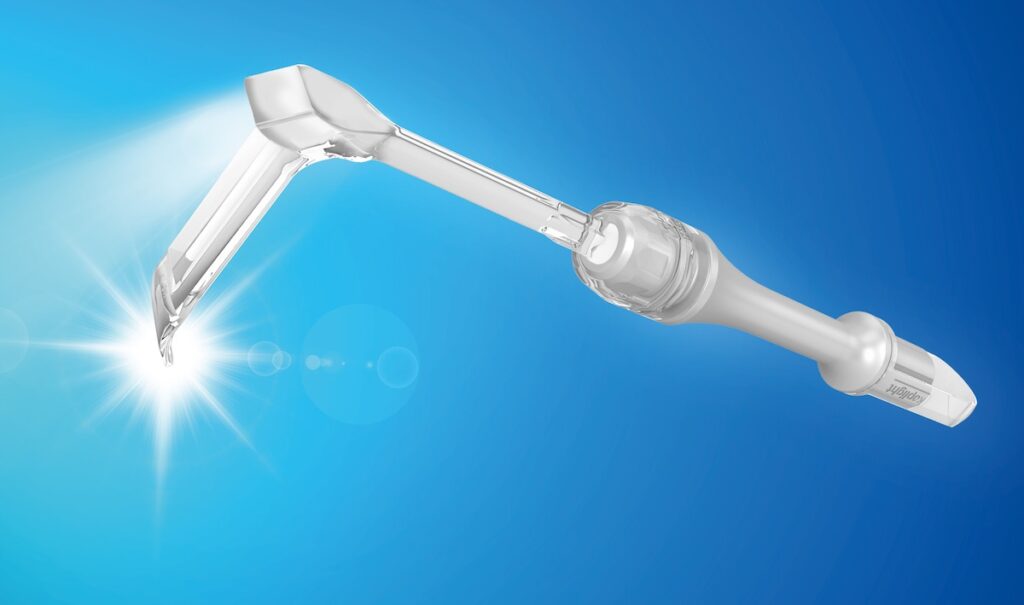Surgeons work under intense surgical lights for extended periods as they do their precise work. And they often battle with eye fatigue and compromised vision due to surgical lighting, which makes ergonomics a key factor.
Optimal lighting in the operating room isn’t just about brightness; it’s a smart balance that can sometimes make or break surgical outcomes. The ergonomics of surgical lighting are central to reducing eye strain, improving visual clarity, and maintaining peak performance during long operations.
Using optimal lighting solutions lets you create an environment that boosts surgical precision and safeguards your own well-being and that of your team. Here, we’ll explore what’s behind eye fatigue and eye strain, and what you can do about it, from adjusting color temperature to integrating handheld devices. These are all designed to create a more comfortable and efficient OR setting.
Contents
Eye strain in surgical lighting: The ongoing problem
Surgical lighting lets surgeons see and access the surgical site. However, working under the lights for extended periods can strain the surgeon’s eyesight, especially for complex surgeries like neurosurgeries requiring intense focus and precise adjustment. Modern surgical lights come in various designs that offer possible solutions for this issue.
Surgical light systems are the most commonly used light sources during surgeries. They involve ceiling- or wall-mounted luminaires overhead illumination containing xenon or LED lamps. Modern surgical lamps can emit highly bright and long-lasting illumination. Other types of light sources include:
- Wearable headlights and loupes
- Operating microscopes
- Lighted retractors
- In-cavity lighting
A meta-analysis of surgical ergonomics reported eye strain as an occupational hazard affecting one in four of the 5,512 surgeons analyzed. Eye strain can cause headaches, difficulty concentrating, and blurred vision, among surgeons, impacting their performance.
Surgeons must often adjust their position to shift their gaze between the brightly lit surgical site and darker peripheral areas. This adaptation repeatedly engages the eyes’ accommodative mechanism, leading to fatigue. Moreover, the reflection from surgical instruments and wet tissues can create a glare effect. The glare can add to the strain by forcing surgeons to assume uncomfortable body postures just to maintain clear vision.
Importance of ergonomic lighting design
“Ergonomics” refers to something designed for efficiency and comfort in the work environment. In surgery, ergonomic measures involve optimizing surgical lighting, table height, and instrument designs. Ergonomic surgical lights include features that improve surgical performance and avoid distractions. Proper lighting reduces eye strain and fatigue among all members of the operating room team, especially during lengthy procedures.
Modern lights aim to have optimized weights, easy adjustability, user-friendly interfaces, and abilities to reduce heat transfer and shadows. According to prominent medical supply manufacturers, these features are must-haves for surgical lights.

Wearable surgical lighting devices, such as headlights, are particularly problematic ergonomically. They strain the eyes and neck of the surgeon and cannot adjust automatically. Frequent headlight use is an occupational health hazard that may even shorten a surgeon’s career.
Distractions from improper lighting systems can lead to errors that ultimately compromise the patient’s health. A study in The Surgery Journal found that a single-minute distraction may result in a 23-minute delay in the surgeon’s cognitive processing and focus.
Color temperature and its impact on eye comfort
Color temperature is a parameter that describes the color characteristics of light sources. Based on their temperature in Kelvin (K), colors can range from warm to cool. Warm colors have temperatures of 2,700–3,000 K; they’re typically yellow-tinted. In contrast, cool colors are bluish and have temperatures above 4,500 or 5,000 K. Surgical lights have color temperatures that range from 3,000 to 6,700 K and provide color-neutral illumination for adequate visibility.
Different color temperatures can affect eye comfort and tissue appearance differently. Cool colors are similar to sunlight; they allow for more precision during surgery. This property is useful for procedures in cardiovascular surgery that require a clear visualization of red tissues, such as blood vessels. Warm colors are suitable for long surgeries as they put less strain on the eyes.
However, no studies show that a single light color is generally better than the others. A paper analyzing how surgeons evaluate different surgical light colors found no significant differences between temperatures 4,000, 4,500, and 5,100 K in improving illumination.
Modern surgical lights use LED lamps that emit light of various colors. That said, in today’s operating room practices, white remains the prominent light color. A cool, white resembles natural daylight, offering balanced illumination. It provides an accurate view of the surgical field and allows surgeons to see with minimal eye strain.
Glare reduction techniques
Surgical glare occurs when light reflects off smooth or wet tissue surfaces. The reflection, in turn, causes bright spots that interfere with visualization and strain the surgeon’s eyes. A glare effect is the result of a big difference between the ambient light and the light illuminating the surgical field, which strains the eyes.
Surgical lights should have a high luminance (or brightness) without causing eye strain or glare. The International Electrotechnical Commission (IEC) standards recommend a luminance between 40,000 and 160,000 lux for surgical lights in the operating field. According to IEC standards, lighting should also be homogenous. Homogenous light limits bright and glaring light at the center of the light patch.

Modern surgical lighting systems employ several additional techniques to reduce glare. Researchers at Massachusetts General Hospital conducted a trial overseeing the application of green light during surgeries to combat glare. The researchers found that green light can reduce reflected glare and prevent manual light adjustment.
Another novel way of preventing glare is to implement automated techniques. Contemporary LED-based systems use sensors that can adjust the light distribution based on the characteristics of the surgical field. Through sensors, these systems can modify the illumination pattern to minimize glare while maintaining the required light levels.
Shadow control and light field management
Shadow control in surgical lighting refers to the elimination of unwanted darkened areas within the operative field that can obstruct the surgical site and increase eye strain. The presence of shadows or dark spots forces the surgeon to manually adjust the light. By doing so, the surgeon interrupts the surgery and becomes prone to distractions. A study found that repositioning the light to optimize the view occurs every 7.5 minutes.
Surgical lighting systems can prevent shadow control through multi-array configurations. These arrays consist of individual light sources mounted to the ceiling, floor, or wall and arranged in concentric patterns. Singular wearable devices, such as ergonomic, lightweight headlights, can also contribute to shadow control. They prevent the need for multiple overhead light adjustments as they’re strapped around the surgeon’s head.
Operating room lights can also use diffusers and reflective surfaces that scatter the light. These measures help distribute light evenly across the surgical field. Surgical lights may include features that automatically adjust the lighting based on the surgical field’s characteristics. For example, lights may incorporate sensors to detect the position of the surgeon’s hands and automatically adjust the lighting to reduce shadows and improve visibility.
Integration of handheld lighting devices
Handheld surgical illumination devices are portable, surgeon-controlled, targeted light sources that complement overhead lighting systems. They provide focused illumination in specific areas of the surgical field. These devices help prevent frequent overhead light adjustments and reduce the risk of contamination. Examples of such devices include:
- Lighted retractors
- Single-cable systems
- Sterile light strips

Lighted retractors illuminate surgical cavities via an attached lamp. They’re small in size; as such, they’re easy to control and maneuver. However, handheld retractors occupy a surgeon’s or assistant’s free hand and can’t retract large areas, such as the sternal cavity. Lighted retractors can also be self-retaining, which means they can hold tissue in place without any need for manual assistance.
Personalized lighting preferences and controls
Surgical lighting cannot be effective without an optimized interface. The surgical light’s interface should be intuitive, user-friendly, and responsive to the surgeon’s needs. Optimized control settings can improve surgical precision and prevent errors from distractions.
Advanced surgical lighting systems could potentially implement artificial intelligence (AI) algorithms that can tailor lighting to the procedure type and surgeon preferences. Such capabilities could help reduce errors and improve efficiency in the operating room.
AI algorithms and technologies that promise to find their way into operating room lighting systems include:
- Tissue feature tracking
- 3-Dimensional (3D) smart tracking technologies, such as Microsoft Kinect
- Thermal imaging technologies
Future surgical lights could be completely wireless and automated. An automated lighting system can use tracking-based systems to illuminate the surgical field effectively during surgeries. Automation can potentially eliminate surgery stoppages and reduce contamination risk by preventing unsterile contact with the surgical lights.

